How To Define Your Ideal Target Webinar Audience
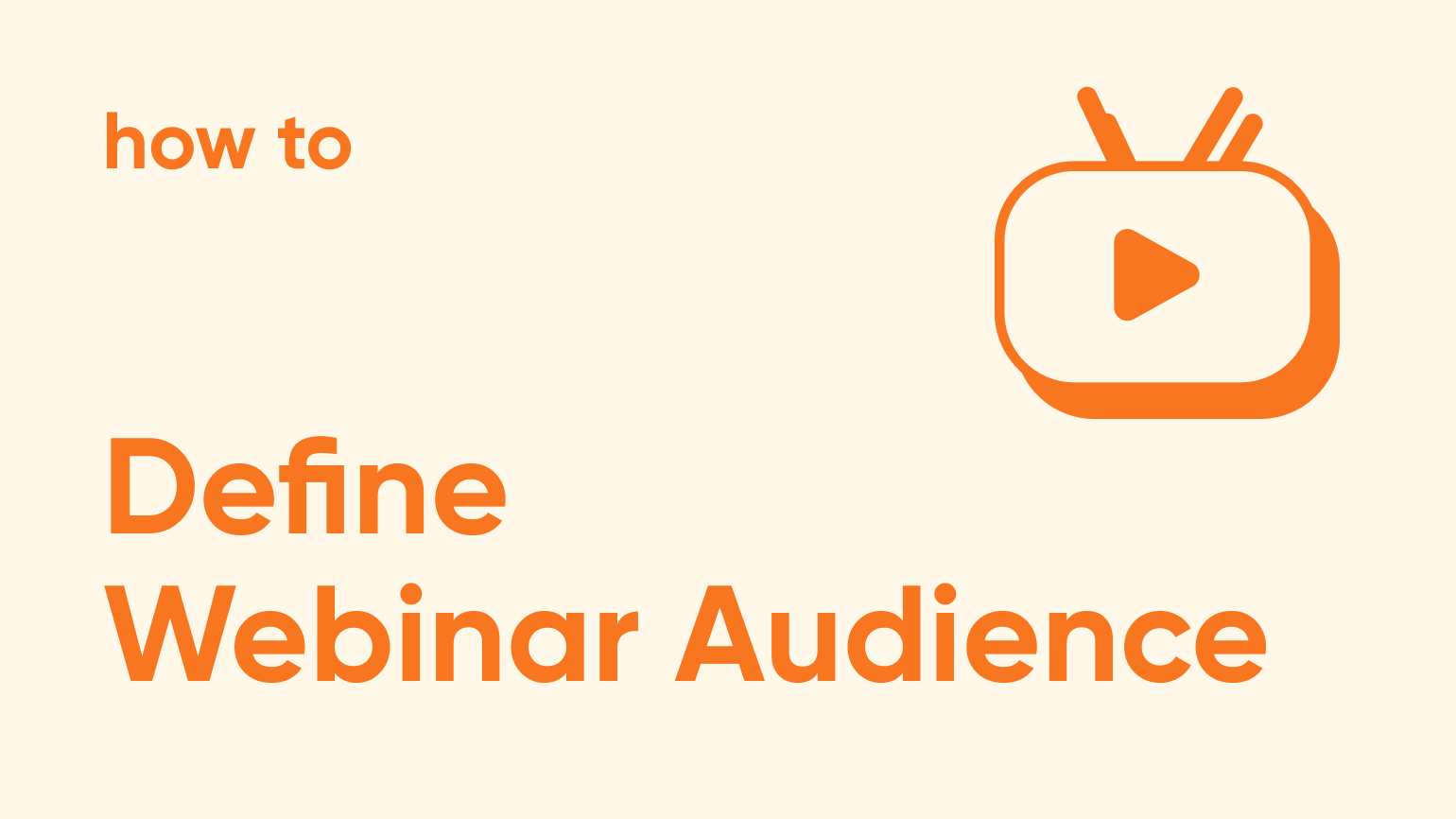
Webinars have become one of the most effective ways to connect with your audience, showcase your expertise, and grow your brand.
But let’s face it: all the best webinar in the world won’t matter if it doesn’t reach the right people. That’s where defining and targeting your webinar audience comes into play. If you want your webinar to be a success, you need to know exactly who you're speaking to and how to grab their attention.
In this guide, we’re going to walk through everything you need to know about defining and targeting your webinar audience, from understanding who your ideal attendees are, to how to speak their language, and finally, how to get the word out so your event is a hit.
Why Defining Your Target Market Audience for Your Webinar Matters
Before we dive into the basics of targeting your audience, let’s take a step back and think about why this is such a big deal in the first place.
You know that feeling when you’ve prepared something really special, and then, when you present it, you feel like no one cares? Yeah, that’s what happens when you don’t define your audience. If you don’t know who you’re speaking to, your message can easily get lost, leaving you with low attendance, little engagement, and missed opportunities.
To ensure your message resonates, it's crucial to find your target audience and tailor your content to their specific needs and interests.
Here’s why defining your audience is crucial:
Engagement
When you tailor your content to the right people, they’re much more likely to get involved. They’ll ask questions, share experiences, and engage with the webinar in a way that makes the event feel more interactive and valuable.
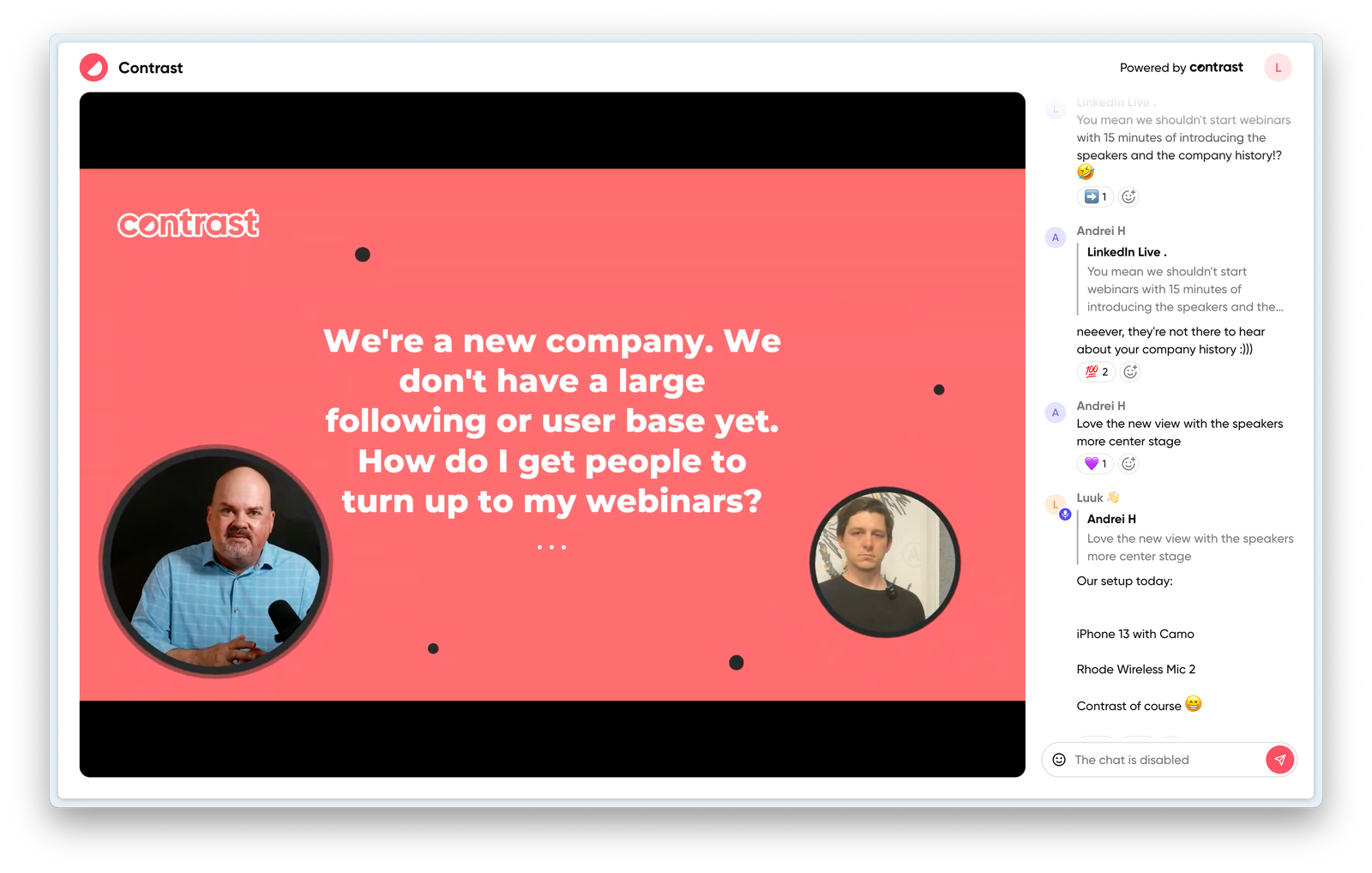
Conversion
Whether your goal is to get webinar attendees to sign up for your newsletter, download your latest eBook, or buy a product, relevance is key. The more closely your content aligns with their needs, the more likely they are to convert.
Content Customization
Knowing who you’re speaking to helps you design content and webinar ideas that speak directly to their challenges, interests, and pain points. It’s a win-win—you provide value, and they get exactly what they need. But beyond just the topic, understanding content consumption preferences is key to making your webinar even more effective.
For instance, 63% of webinar views are on-demand (replay), meaning a large portion of your audience may prefer watching the content after the live event. This highlights the importance of ensuring your replay is easily accessible and engaging for those who couldn’t attend live.
Without a defined audience, your webinar could end up feeling like you’re hosting a party where no one really fits in. You know, that awkward “no one knows each other” vibe? Definitely not the kind of vibe you want for a webinar.
Choosing When to Host
An important part of hosting a successful webinar is choosing the right time and day. You want to pick a time that works well for your audience, so they can actually attend and engage. Whether you're targeting busy professionals or a specific time zone, timing can make or break your event.
Generally, weekdays tend to work better than weekends, and mid-morning or early afternoon is often ideal. But it can vary depending on your audience!
Make sure to consider your audience's schedule, and you'll have a much higher chance of a successful turnout.
Understanding Your Target Audience
Understanding your target audience is the cornerstone of any successful marketing campaign. A target audience refers to a specific group of people who are most likely to be interested in your product or service. To truly connect with your ideal customers, you need to dive deep into their demographics, interests, behaviors, and pain points. This valuable information can be gathered through thorough market research, social media analytics, and direct customer feedback.
By having a well-defined target audience, you can create marketing campaigns that speak directly to their needs and interests. This not only increases the likelihood of conversion but also creates customer loyalty.
Moreover, understanding your target audience allows you to focus your marketing efforts on the most relevant channels and platforms, reducing waste and improving your return on investment. In essence, knowing your audience inside and out is the key to creating impactful and efficient marketing strategies.

Run Webinars Your Audience Will Love to Attend
Start for free with up to 30 registrants. No credit card needed.
Start for freeBenefits of Knowing Your Target Market
Knowing your target market is essential for crafting marketing strategies that drive business growth.
A target market refers to the overall group of people or businesses that your company aims to reach and serve with its products or services.
By understanding your target market, you can uncover opportunities to differentiate your business and create marketing campaigns that resonate with your ideal customers.
The benefits of knowing your target market are numerous:
Improved Marketing Effectiveness
By targeting the right audience, you increase the chances of conversion and build customer loyalty by making sure you have the right messaging, and that it has the right effectiveness.
Increased Efficiency
Focusing your marketing efforts on the most relevant channels and platforms helps reduce waste and boosts your return on investment.
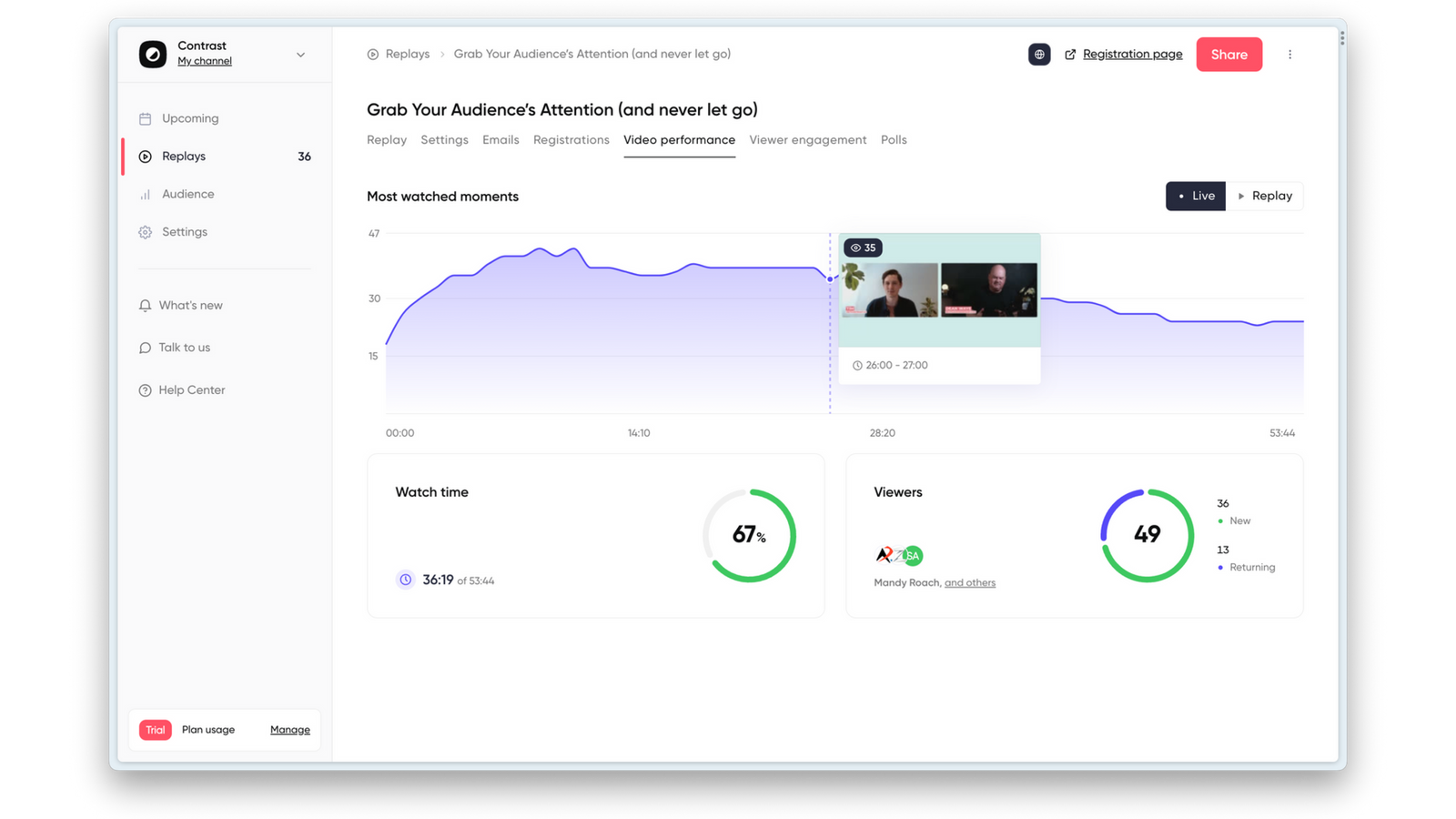
Competitive Advantage
Understanding your target market allows you to identify unique opportunities to set your business apart from the competition.
In short, a deep understanding of your target market empowers you to create marketing strategies that are not only effective but also efficient and distinctive.
Start with Your Webinar’s Goals: What Are You Trying to Achieve?
The first step in targeting your audience is understanding what you want to accomplish with your webinar. Different goals require different types of attendees, so it’s important to get clear on what you’re hoping to achieve.
A target audience refers to a specific group of people who are most likely to be interested in your product or service, and understanding their consumer behavior is crucial.
Here’s a breakdown of common webinar goals and the type of audience they attract:
Lead Generation
If your goal is to attract new webinar leads, you’re looking for people who are just starting to explore a topic or problem. These people are in the awareness or consideration phase of their buyer’s journey. They’re curious but not ready to buy just yet.
Example audience:
Small business owners interested in learning how to get better at digital marketing but not yet using advanced tools or strategies.
Sales Conversion
If you’re hoping to convert leads into paying customers, your ideal audience will already be somewhat familiar with your brand and products. These people are further along in their decision-making process and are ready for more detailed information before they make a purchase. For them, leveraging sales-focused webinars will be a powerful tactic.
Example audience:
People who have signed up for your free resources or newsletter and are familiar with your brand, but haven’t yet pulled the trigger on buying.
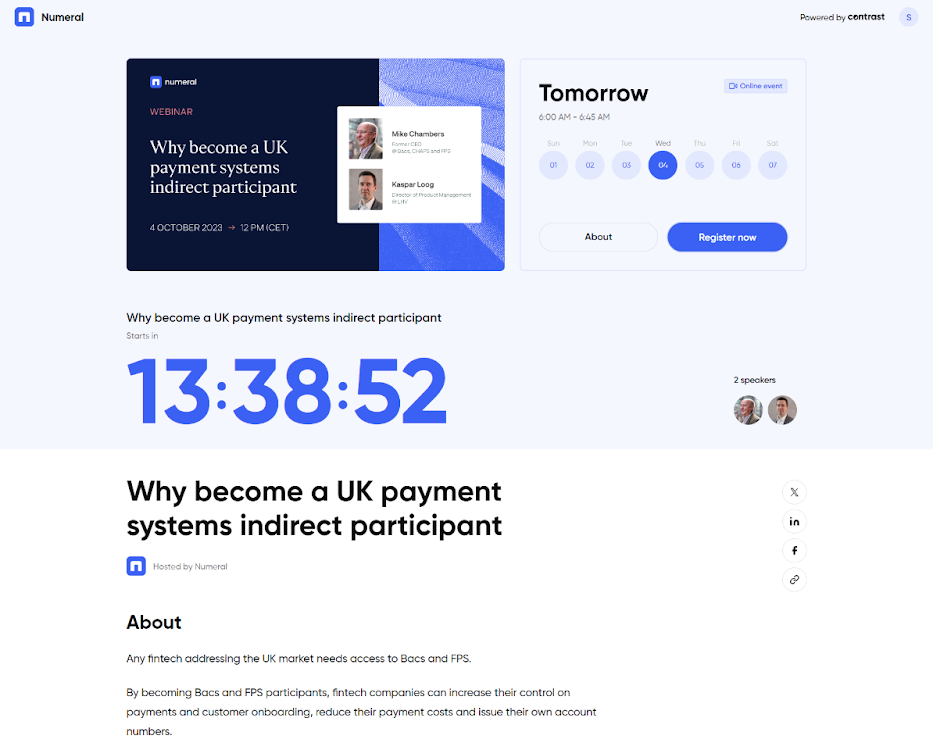
Education and Training
This goal is all about helping your audience improve their skills or knowledge. If your goal is educational, you’ll want to attract people who are eager to learn and grow. Whether it’s marketing, leadership, coding, or anything else, your audience should have a thirst for knowledge and virtual training webinars are a great tool.
Example audience:
Individuals in marketing or entrepreneurs looking to improve their skills, like learning more about email marketing tactics or social media advertising.
Brand Awareness
For raising brand awareness, you’ll want to target a broader audience. These people may not be immediate customers, but building brand recognition with them is the key. This goal is about getting your name out there and showcasing your expertise.
Example audience:
Anyone who might find your content useful or interesting, even if they’re not currently looking for your product or service.
For instance, target audience examples could include young professionals interested in career development or parents looking for educational resources for their children.
Once you know what you’re trying to achieve, it will become much easier to define your audience and tailor your content and promotion strategies to meet those goals.
Ideal Attendee Persona
Now that you know your webinar’s goals, it’s time to create an ideal attendee persona (or multiple personas if you’re targeting different groups). This is a blueprint for who your perfect attendee is and will help you tailor every aspect of your webinar.
Leveraging data from current customers can provide valuable insights into what resonates with your audience and help refine your marketing strategies.
Here’s how to build your persona:
Demographics
Basic info like age, gender, job title, industry, location, and income level. This gives you a general idea of who your audience is and where they’re coming from.
Example:
A 35-year-old female marketing manager working in retail in New York City who earns between $60k-75k a year.
Psychographics
These are the deeper, more personal insights into their behavior, values, and interests. What motivates them? What challenges are they trying to solve? What are their goals? These insights will help you make your content more relatable and engaging.
Example:
This persona is interested in improving her marketing skills, loves networking with other professionals, and is always looking for ways to grow her career.
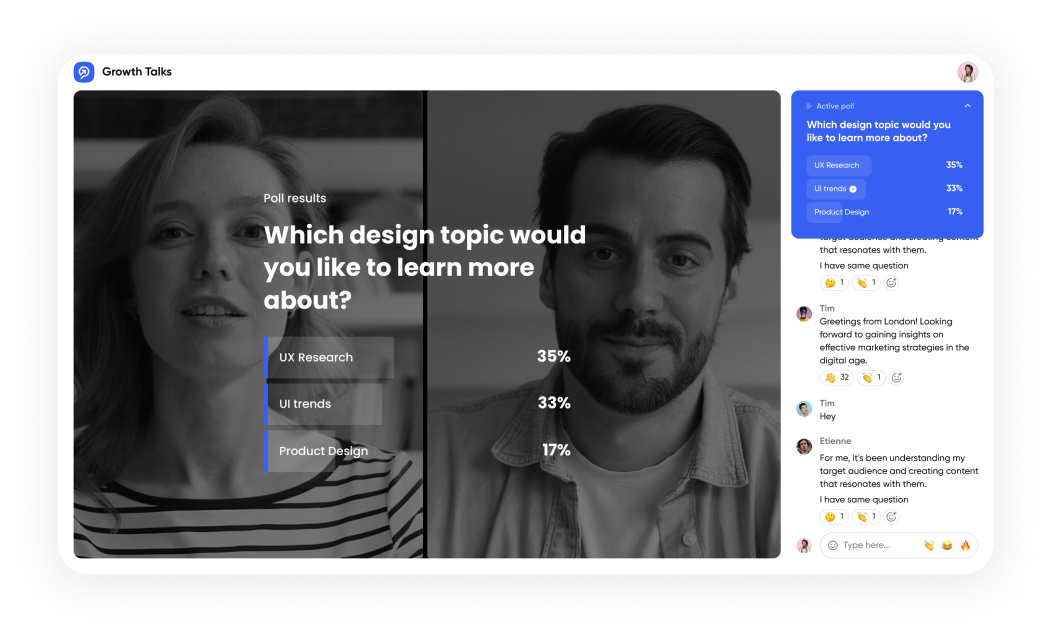
Professional Info
If you’re hosting a B2B webinar, you need to know the job titles, industries, and levels of experience that fit your target persona. Are they decision-makers, influencers, or just learning the ropes?
Example:
Marketing Manager, looking for ways to optimize her company’s advertising campaigns and improve ROI. Additionally, understanding the profiles of potential customers allows you to tailor your marketing efforts to attract new leads who are likely to convert.
Pain Points
What problems are they facing that your webinar can solve? Identifying these pain points helps you position your webinar as the solution.
Example:
Struggling to improve customer engagement with digital ads and unsure how to target the right audience effectively.
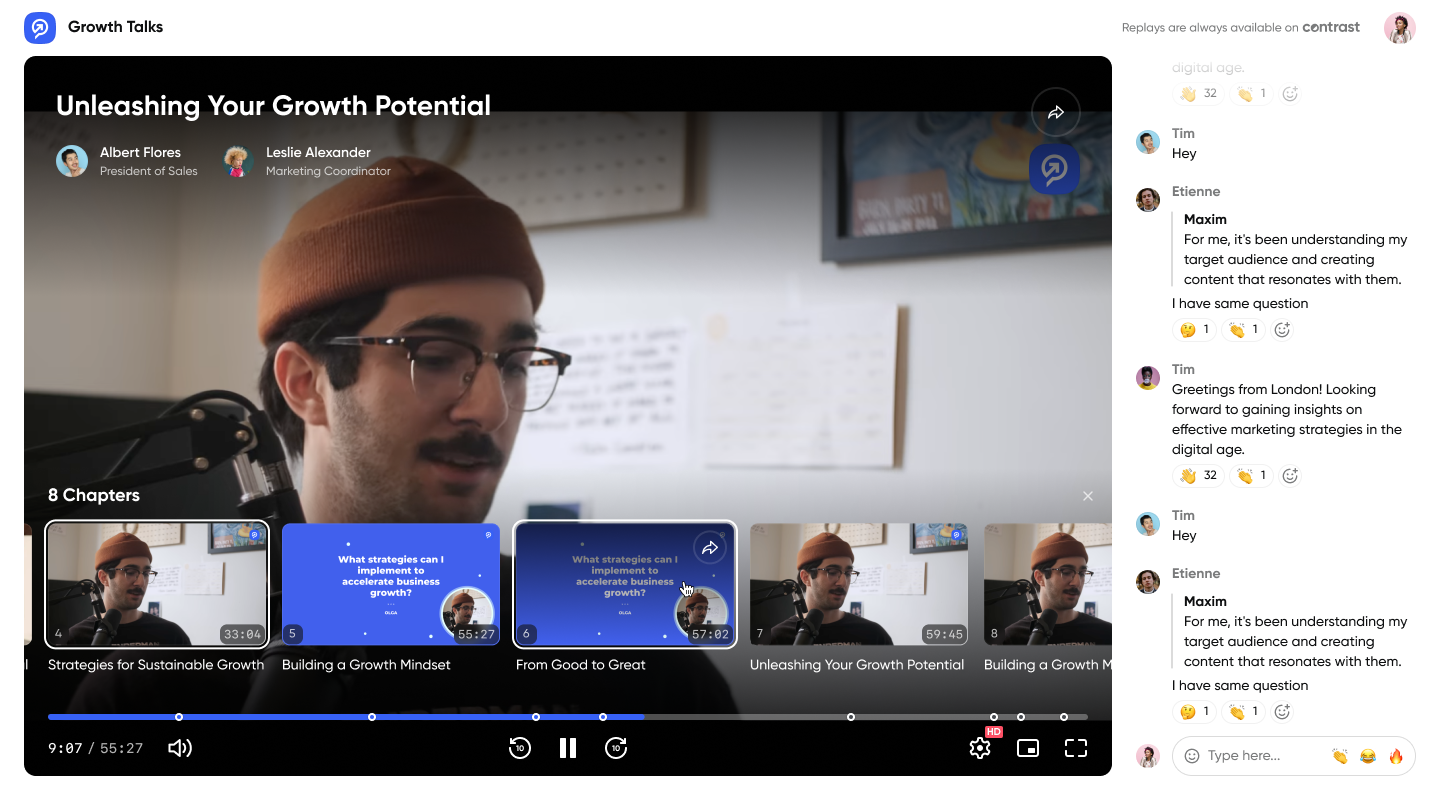
Goals
What do they want to achieve by attending your webinar? Make sure your content is designed to meet these goals.
Example:
Wants to learn new tools for tracking ad performance and targeting specific customer segments.
Once you’ve got your persona (or personas) nailed down, you can use them to craft a more tailored and relevant webinar experience. This helps you focus your marketing efforts, craft compelling content, and make sure the right people are signing up.

Researching Your Market and Industry Trends
Staying ahead in the business world requires a keen understanding of your market and the latest industry trends. By keeping up-to-date with these trends, you can identify opportunities to innovate and differentiate your business.
Here’s how you can stay informed:
Conduct Market Research
Utilize online tools and surveys to gather detailed information about your target audience’s needs and preferences. This data is invaluable for tailoring your marketing strategies.
Analyze Industry Reports
Regularly review industry reports and research studies to stay informed about the latest trends and opportunities in your field.
Monitor Social Media
Use social media to track industry trends and engage with your target audience. Platforms like Twitter, LinkedIn, and Facebook can provide real-time insights into what’s trending in your industry.
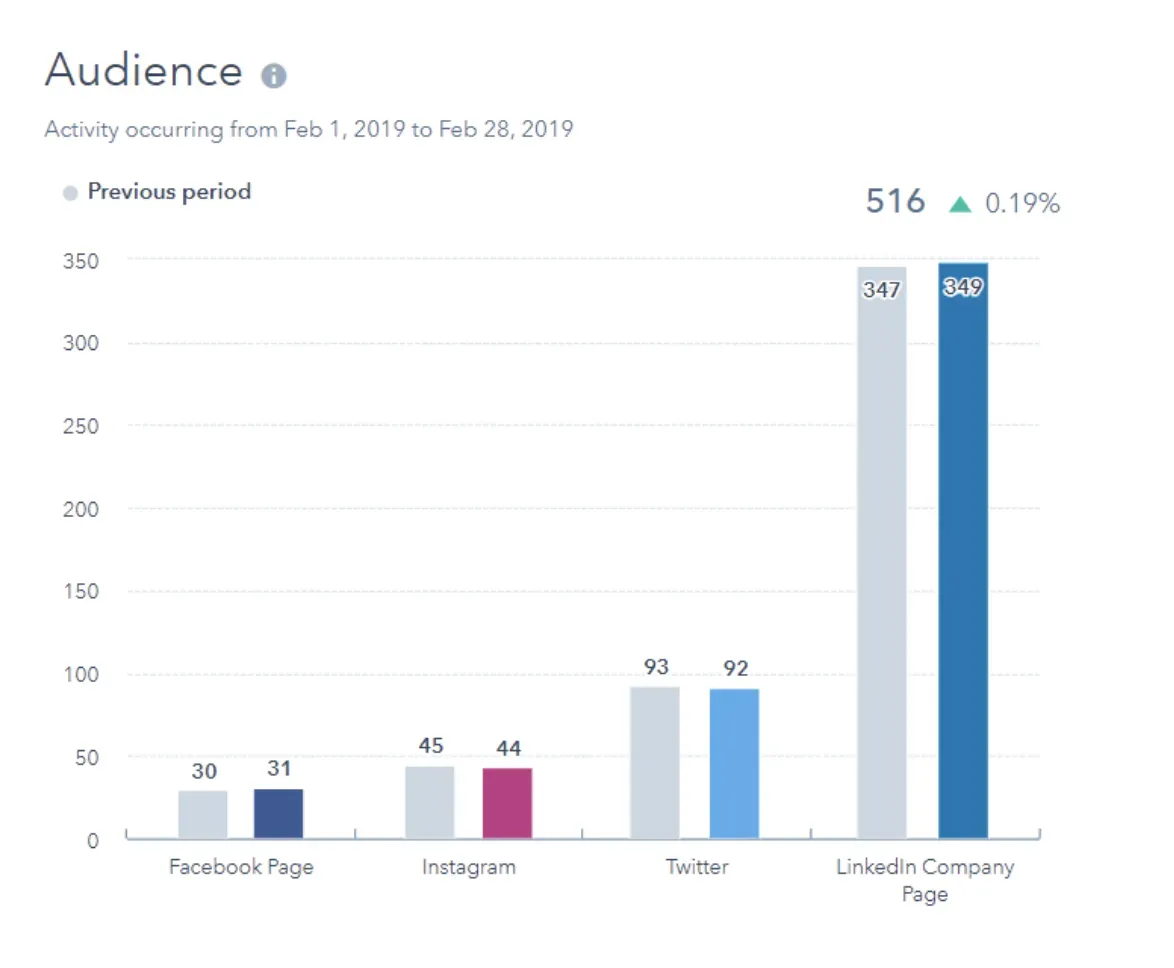
Attend Industry Events
Participate in industry conferences and events to network with other professionals and stay updated on the latest developments.
By diligently researching your market and industry trends, you can create data-driven marketing strategies that are more likely to succeed and drive business growth. This proactive approach ensures that your marketing efforts are always aligned with the current landscape, giving you a competitive edge.
Choosing a Webinar Topic
Now that you’ve got a clear understanding of your audience, it’s time to pick a topic that will resonate with them. Your webinar topic needs to be directly aligned with their interests, problems, and goals. Here’s how to choose the perfect one:
Solve a Problem
Your topic should address a pain point your audience is dealing with. If they have a specific issue, show them how your webinar will solve it. This builds immediate relevance and interest.
Example:
“How to Boost Your Website Traffic in 30 Days Using Proven SEO Strategies.”
Provide Tangible Value
People want actionable tips and advice that they can implement right away. Provide value that goes beyond surface-level information and offers something new or useful.
Example:
“How to Create High-Converting Ads with a Small Budget.”
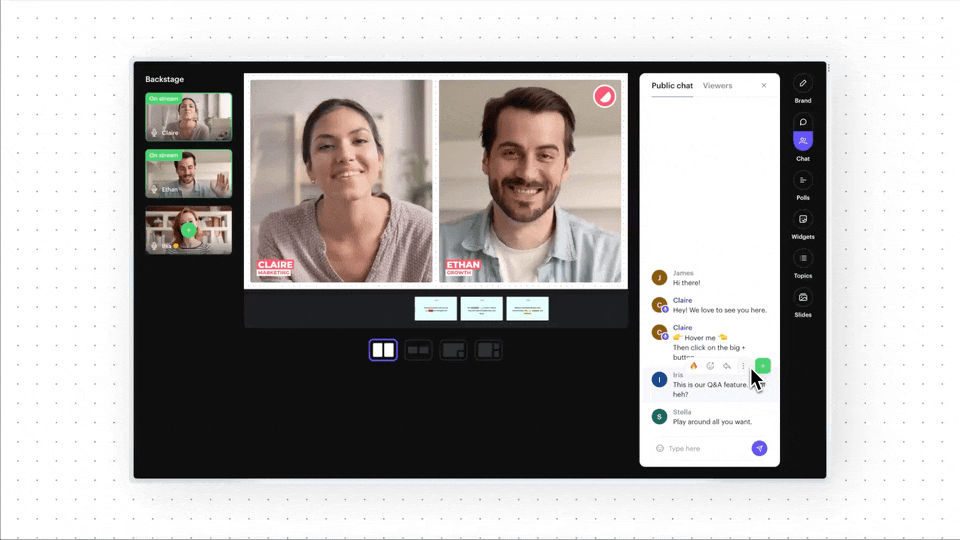
Be Specific
Don’t be vague. A broad topic like “How to Grow Your Business” is too general. Focus on something more niche, like “How to Scale Your E-Commerce Business Using Facebook Ads.”
Example:
Instead of “How to Use Social Media for Business,” go with “How to Increase Sales with Instagram Ads.”
Follow Trends
Stay on top of trends in your industry. If something’s trending, use it to your advantage.
Example:
“Exploring AI in Digital Marketing: What You Need to Know Right Now.”
Ask Your Audience
If you already have a community or email list, you can ask them directly through a survey or poll.
1) Send a survey to your customers/email list to find out what topics they're interested in.
2) If you run a webinar, include a poll to ask attendees what they'd like to learn more about.
By focusing on a specific audience, you can ensure that your webinar topic addresses their unique challenges and interests, making it more relevant and engaging.
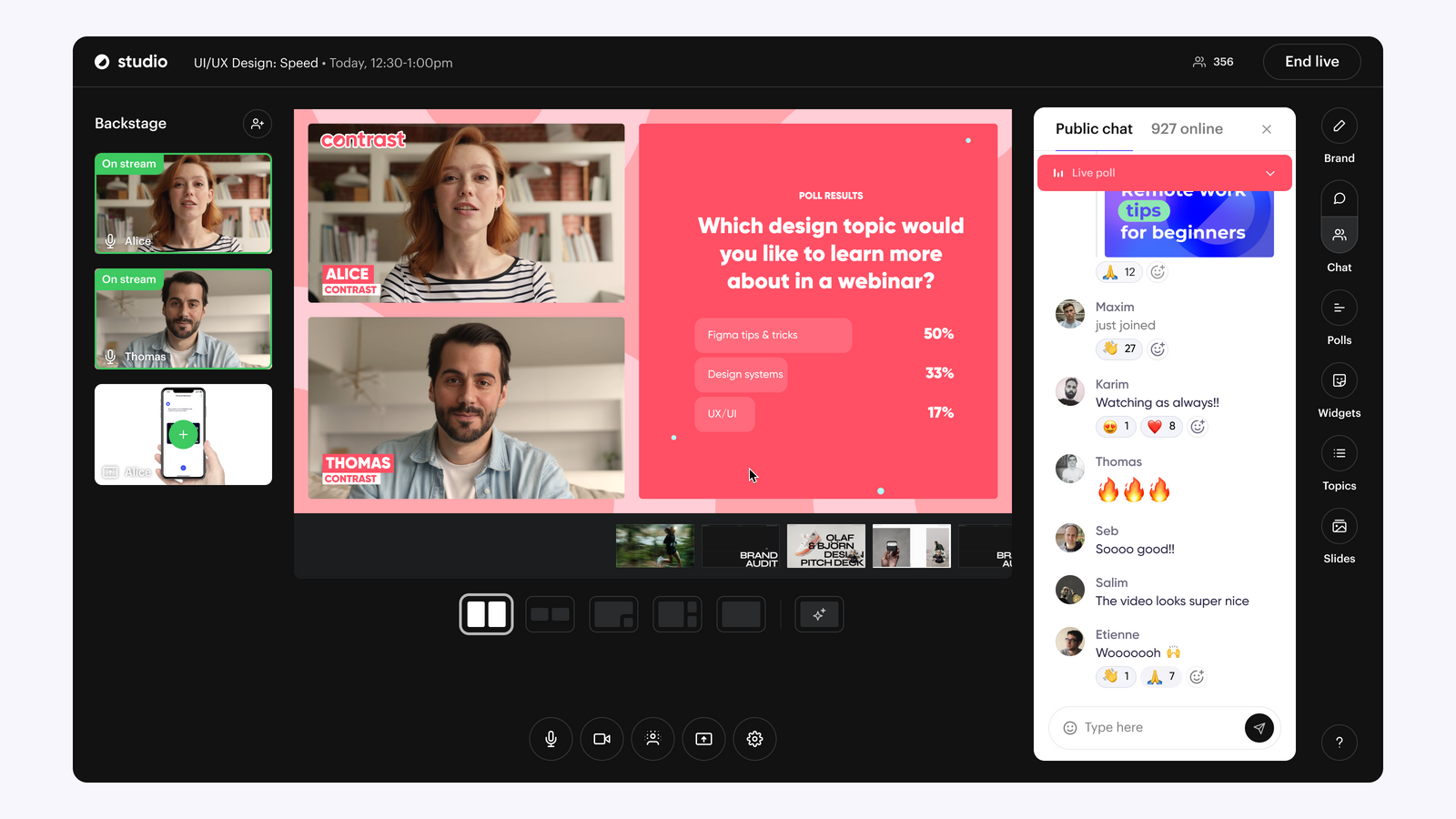
Promote Your Webinar
Now that you’ve got your audience and topic, it’s time to start promoting your webinar. You need to meet your audience where they are, so figuring out where they hang out online is a key part of your promotion strategy.
Here are some ideas for where you can promote your webinar:
Social Media
Whether it’s LinkedIn, Twitter, Instagram, or Facebook, social media platforms are an excellent way to connect with potential attendees. Use posts, stories, and ads to spread the word.
Paid Ads
Social platforms like Facebook and LinkedIn have powerful targeting options. Use these to target your ideal audience based on demographics, job titles, and interests.
Organic Posts
Don’t forget to post on your own profiles. Use eye-catching graphics and compelling copy to encourage sign-ups.
Email Marketing
If you have an existing email list, use it to send out email invitations! Send a series of emails leading up to the event to drum up interest. Personalize these emails based on your audience segments for maximum impact.
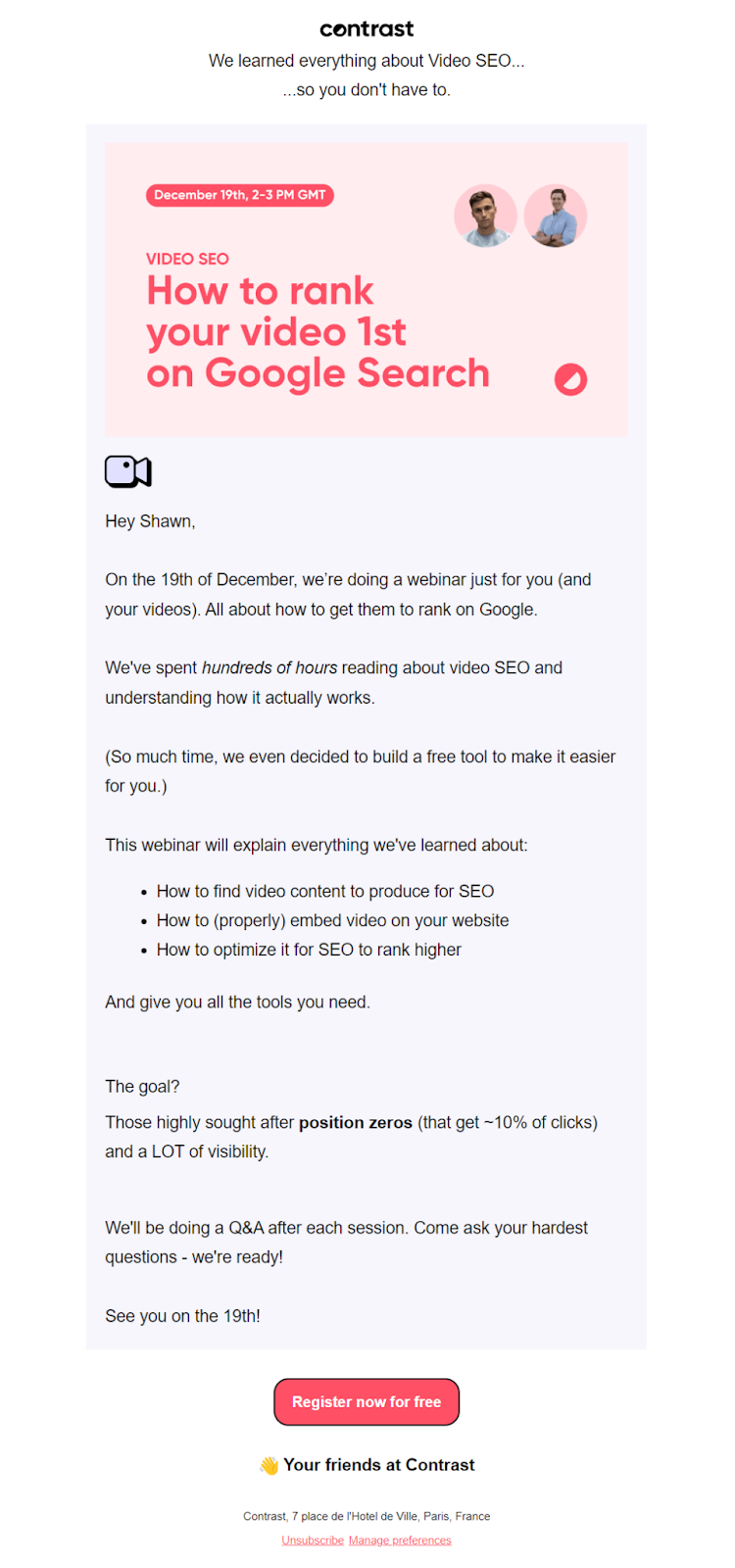
Collaborations
Partner with industry experts or other guest speakers to help spread the word. If they have an audience that matches your target, a quick mention from them can bring a lot of new sign-ups.
Industry Forums & Communities
Get involved in niche groups or communities where your audience hangs out—whether that’s on Reddit, Facebook Groups, or professional networks like LinkedIn.
Engage Your Audience Before the Webinar
Getting people to sign up is only half the battle. Keeping them engaged and excited leading up to the webinar is equally important. Implementing a well-thought-out marketing strategy can help build anticipation and ensure high attendance for your webinar. Here’s how you can keep your audience on the edge of their seats:
Reminder Emails
Send a series of email reminders with a personal touch. Include some behind-the-scenes sneak peeks or a preview of what’s to come. This builds excitement and ensures people remember to show up.
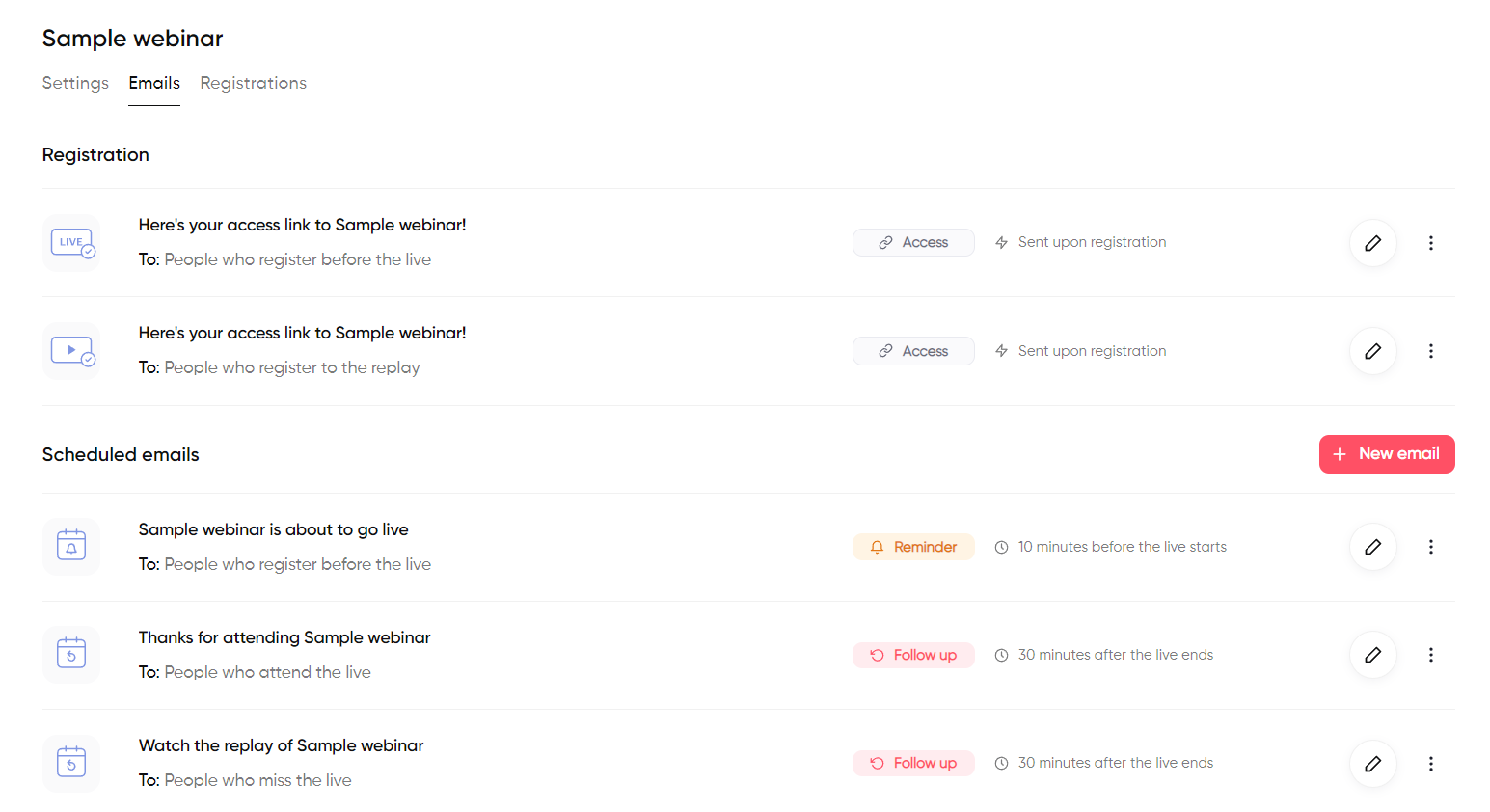
Pre-Webinar Surveys
Send out a quick post-webinar survey asking registrants what they’re most interested in learning about. This not only builds anticipation but also helps you fine-tune your content to better meet their needs.
Countdowns & Teasers
On social media, create a countdown to the event. Share teaser videos, behind-the-scenes content, or sneak peeks of what attendees can expect. This will keep people excited and engaged.
Post-Webinar Follow-Up
The work doesn’t stop once your webinar ends. Follow-up is essential for keeping the conversation going and converting those attendees into loyal customers.
Thank You Emails
Always send a thank-you email to attendees, and don’t forget to include a link to the replay. This extends the value of your webinar and helps people who couldn’t attend live.
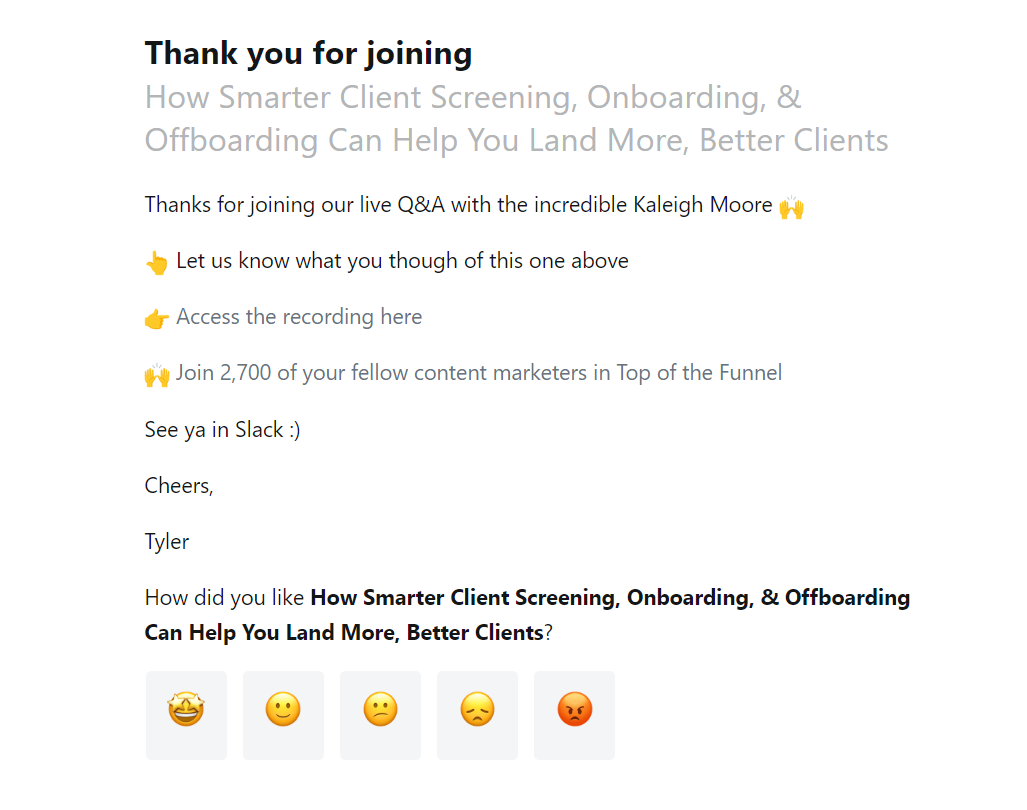
Collect Feedback
Send a short survey to attendees asking for feedback. This will not only help you improve future webinars but also shows your audience you care about their opinions.
Nurture Leads
Follow up with people who didn’t attend. Offer them access to the replay or send them additional resources. For those who attended, continue the conversation with valuable content and personalized offers. Effective follow-up is not just about immediate engagement but also plays a crucial role in your overall business strategy by nurturing leads and building long-term relationships.
Conclusion
Defining and targeting the right audience is the key to making your webinar a success. When you know who your ideal attendees are, what they care about, and how to reach them, you’re setting yourself up for a powerful event that leaves a lasting impact.
So go ahead—take the time to define your audience, create a compelling topic, promote like a pro, and engage before and after the event. You’ve got everything you need to host a webinar that not only attracts the right people but also leaves them eager for more!
Remember, a well-executed marketing strategy is key to ensuring your webinar reaches and resonates with the right audience.
Now it’s time to put these strategies into action. Best of luck with your webinar, and here’s to a successful and engaging experience!


Run Webinars Your Audience Will Love to Attend
Start for free with up to 30 registrants. No credit card needed.
Start for free